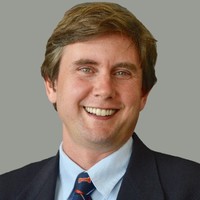While reverse mortgages have long held a reputation for being a viable option for only those who have no other place to turn, the products have evolved to a point where they could be for more than homeowners who find themselves in a “last resort” financial situation. This is according to a new article published in the New York Times.
“Until recently, it was conventional wisdom that a reverse mortgage was a last-resort option for the oldest homeowners who desperately needed cash,” the article reads. “But a growing number of researchers say these loans could be a good option for people earlier in their retirement […].”
Speaking with a number of members of the Academy for Home Equity in Financial Planning (AHE) at the University of Illinois Urbana-Champaign (UIUC), leaders at that organization help describe for the New York Times some of the ways in which reverse mortgages have been analyzed by academic financial researchers to serve different roles for borrowers aged 62 and older.

“The best use of this tool is to provide and supplement income during retirement,” said Craig Lemoine, director of the financial planning program at UIUC and executive director of the AHE. “A younger retiree can stay in the house while turning equity into an income stream.”
The article also profiles a reverse mortgage borrower who made use of the product without being in a “last resort” scenario. Marjorie Fox took out a reverse mortgage on her new home in Reston, Va. shortly after the sudden passing of her husband, and used its standby line of credit as a tool to draw funds from when something unexpected would take place.
“Within a year, her cash reserve was depleted, and Ms. Fox began pulling money from her reverse mortgage,” the article reads of her situation. “Among her expenses: $50,000 on emergency dental work and a down payment to reserve a spot in a retirement community set to open in 2025. Untapped money in the line of credit earns interest.”
The “buffer asset” concept is explored in-depth by the article, and bolsters the information by speaking with Wade Pfau and Barry Sacks, prominent financial academics who have contributed to the renewed interest of financial planners in reverse mortgages. It also solicits input from AHE Founder and Mutual of Omaha Mortgage Director of Enterprise Integration Shelley Giordano, a member of RMD’s Changemakers class for 2021.
“Homeowners in their 60s and early 70s could use cash from a reverse mortgage to protect investment portfolios during market downturns, to delay claiming Social Security benefits or to pay large medical bills,” the article reads.
Read the article at the New York Times.



